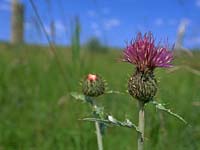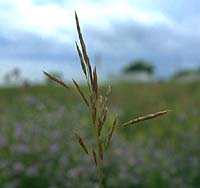|
|

|

|

|
The Life Cycle of Flowering Plants
|

All crops grown in Saskatchewan are angiosperms, or flowering plants. Angiosperm seeds develop within a flower and the structure of the flower is such that it allows for the development of seeds within fruits. Because the seeds are protected, angiosperms have become the most diverse and widespread of all plants.
|

Another reason for the success of flowering plants is the particular methods pollination. Pollination (the transfer of pollen from the anther to the stigma) of the flower may take place by wind, water or by animals. Animals benefit from the act of pollinating; birds, bees, beetles, bats and others receive nutrients from the flower. At the same time, the flower's pollen is carried from one plant to another, allowing pollination to occur.
|

The life cycle of a flowering plant has two distinct phases; a diploid generation and a haploid generation. This alternation of generations means that the plant produces gametes or sex cells, in the diploid generation. For example, a plant which is flowering is in the diploid generation and the plant is referred to as a sporophyte. This sporophyte, produces microspores (that become pollen grains which become sperm) and megaspores (embryo sac which produces an egg). The gametophytes (the sperm and egg) represent the haploid generation in flowering plants. Each carries half the genetic code for a new plant (hence the term haploid). When the sperm and egg are joined in the process of fertilization, a zygote results. This zygote is the beginning of the diploid generation once again. From the zygote, an embryo develops which eventually is enclosed within a seed covered by fruit. A new plant (sporophyte) may then develop and the cycle continues.
|

The part of the life cycle that is visible, then, is the diploid generation. We can see the structure that holds the gametophytes of the haploid generation; the flower. A flower develops within a bud and flower structures are modified leaves attached to a short stem tip called a receptacle. In higher plants, the term inflorescence (flower) refers to those plant parts specifically involved in the sexual reproduction of the plant. Inflorescence can be described as a collection of flowers (a head of wheat is an inflorescence).
|
|
|
|
|
